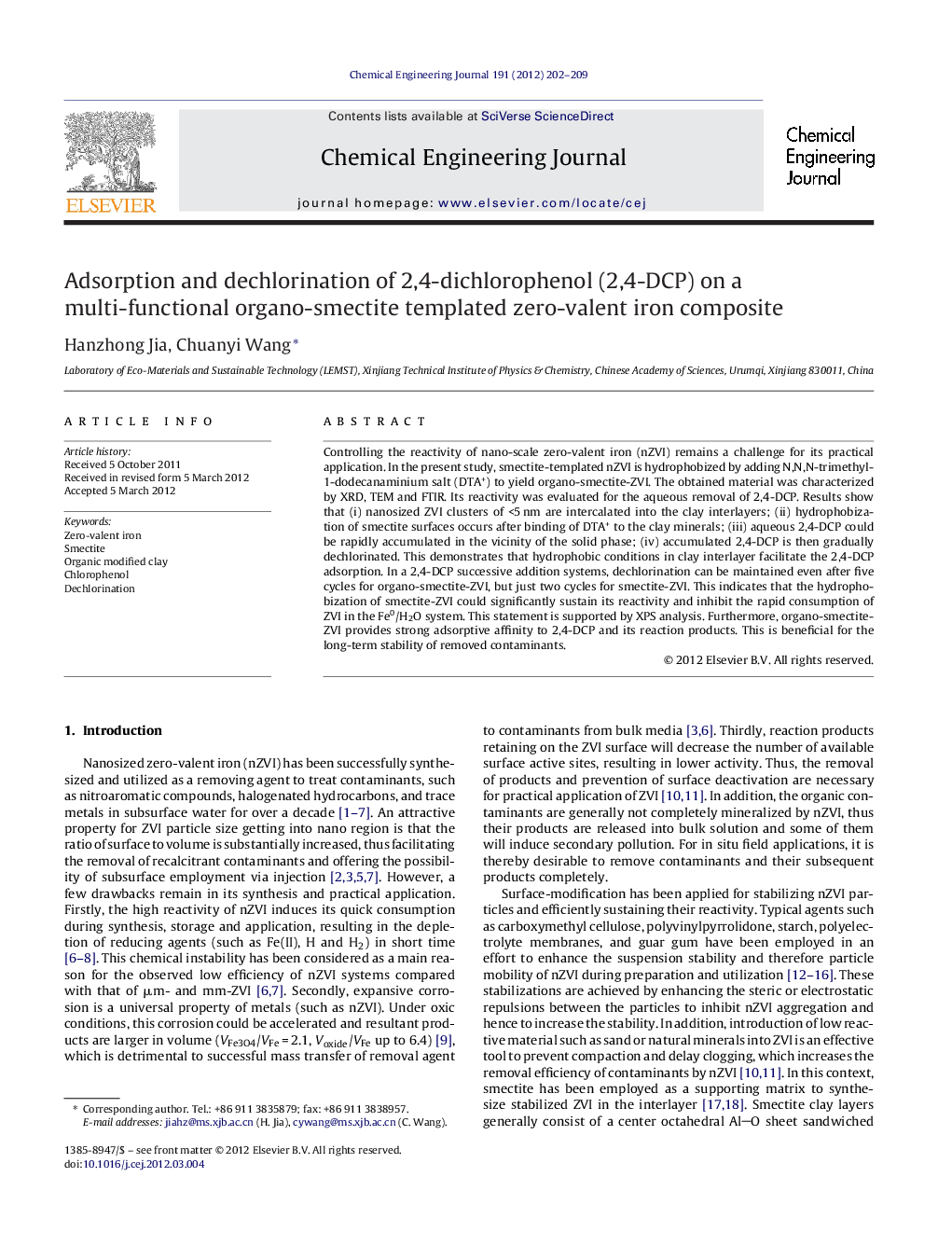| Article ID | Journal | Published Year | Pages | File Type |
|---|---|---|---|---|
| 149902 | Chemical Engineering Journal | 2012 | 8 Pages |
Controlling the reactivity of nano-scale zero-valent iron (nZVI) remains a challenge for its practical application. In the present study, smectite-templated nZVI is hydrophobized by adding N,N,N-trimethyl-1-dodecanaminium salt (DTA+) to yield organo-smectite-ZVI. The obtained material was characterized by XRD, TEM and FTIR. Its reactivity was evaluated for the aqueous removal of 2,4-DCP. Results show that (i) nanosized ZVI clusters of <5 nm are intercalated into the clay interlayers; (ii) hydrophobization of smectite surfaces occurs after binding of DTA+ to the clay minerals; (iii) aqueous 2,4-DCP could be rapidly accumulated in the vicinity of the solid phase; (iv) accumulated 2,4-DCP is then gradually dechlorinated. This demonstrates that hydrophobic conditions in clay interlayer facilitate the 2,4-DCP adsorption. In a 2,4-DCP successive addition systems, dechlorination can be maintained even after five cycles for organo-smectite-ZVI, but just two cycles for smectite-ZVI. This indicates that the hydrophobization of smectite-ZVI could significantly sustain its reactivity and inhibit the rapid consumption of ZVI in the Fe0/H2O system. This statement is supported by XPS analysis. Furthermore, organo-smectite-ZVI provides strong adsorptive affinity to 2,4-DCP and its reaction products. This is beneficial for the long-term stability of removed contaminants.
► Organic cation modified smectite-templated zero-valent iron (ZVI) was developed for improved stability and efficiency of nanosized-ZVI. ► Remediation of 2,4-DCP to phenol by organo-smectite-ZVI proceeds via adsorption–dechlorination processes. ► Hydrophobic interlayer environment could sustain the reactivity of ZVI and thus increase its efficiency.
